Mohammed Al-Yazji, a Palestinian boy, was rescued from the rubble of his destroyed home in Gaza City. He reassured his rescuer in a trembling voice, saying, “I’m okay,” while hiding in dust and bruises.
Published On 3 Oct 2025
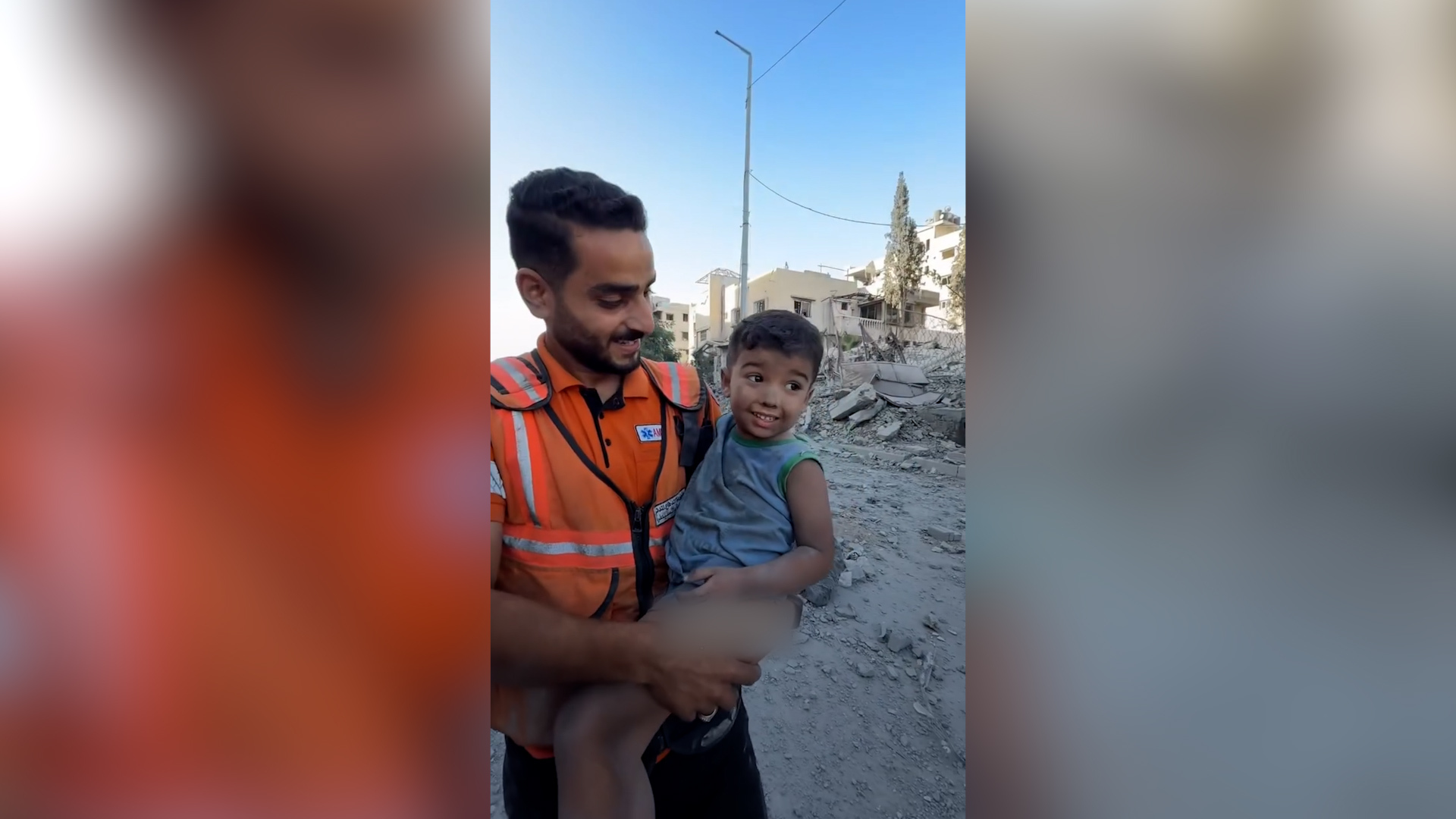
Mohammed Al-Yazji, a Palestinian boy, was rescued from the rubble of his destroyed home in Gaza City. He reassured his rescuer in a trembling voice, saying, “I’m okay,” while hiding in dust and bruises.
Published On 3 Oct 2025
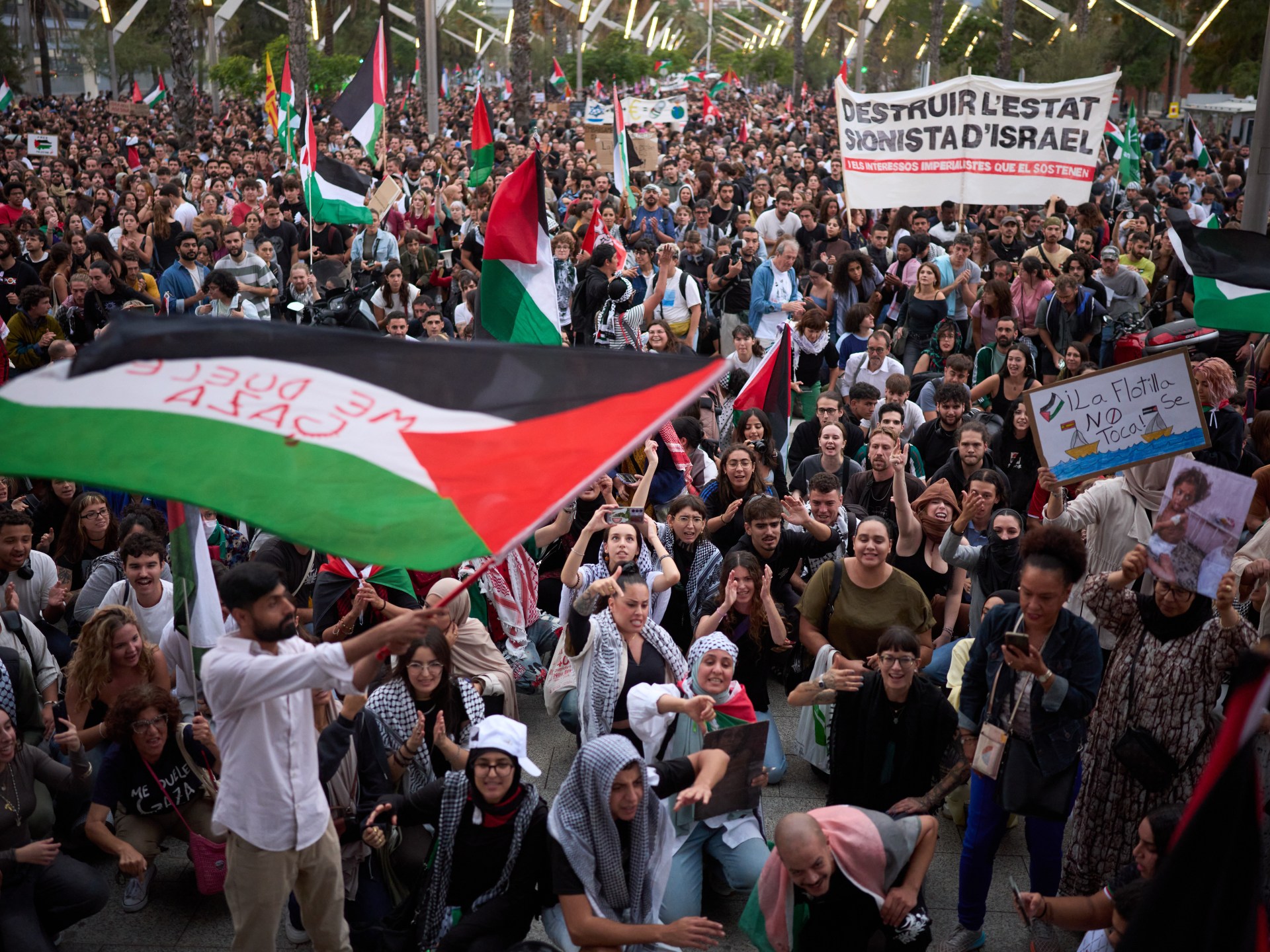
Worldwide protests have erupted following Israel’s interception of the Global Sumud Flotilla carrying humanitarian aid to Gaza, with demonstrators demanding stronger sanctions against Israel.
Across continents from Europe to Australia and South America, crowds gathered on Thursday to protest against the Israeli navy’s blockade of 41 ships carrying at least 400 people, including prominent figures like climate activist Greta Thunberg and politicians, who were attempting to reach Gaza, where the UN has reported famine conditions after nearly two years of Israel’s genocidal war.
In Barcelona, about 15,000 demonstrators marched, chanting “Gaza, you are not alone,” “Boycott Israel,” and “Freedom for Palestine”. Spanish television showed riot police forcibly repelling protesters who attempted to breach barriers. Former Barcelona mayor Ada Colau was among those intercepted at sea and now faces deportation along with fellow activists, including Nelson Mandela’s grandson, “Mandla” Mandela.
Several hundred protesters also gathered outside Ireland’s parliament in Dublin, where Palestinian solidarity is often linked to Ireland’s historical struggle against British colonialism. Miriam McNally, whose daughter joined the flotilla, told AFP: “I am worried sick for my daughter, but I am so proud of her and of what she’s doing. She is standing up for humanity in the face of grave danger.”
Paris saw approximately 1,000 protesters at Place de la Republique, while in Marseille, about 100 demonstrators were arrested after attempting to block access to Eurolinks, a weapons manufacturer accused of selling military components to Israel.
In Italy, where major unions have called for a Friday general strike in solidarity with the flotilla, demonstrations spread across major cities. Rome alone saw 10,000 participants, according to police, with protesters chanting: “We are prepared to block everything. The genocidal machine must stop immediately.”
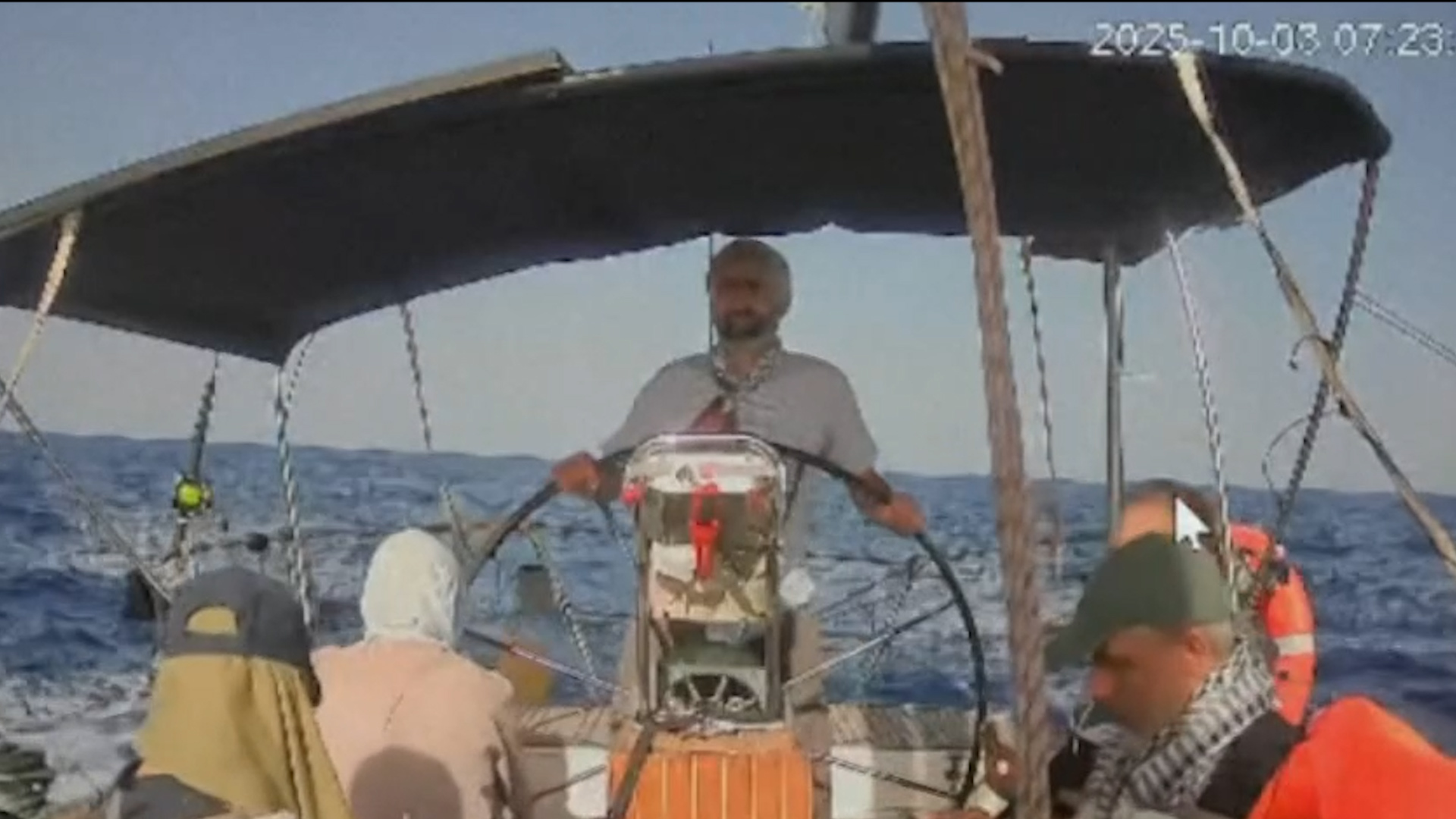
The Marinette, which Israel intercepted after almost 40 others, is the last vessel on the Global Sumud Flotilla heading for Gaza. Within a few hours, the Polish-flagged boat is scheduled to be stopped.
Published On 3 Oct 2025
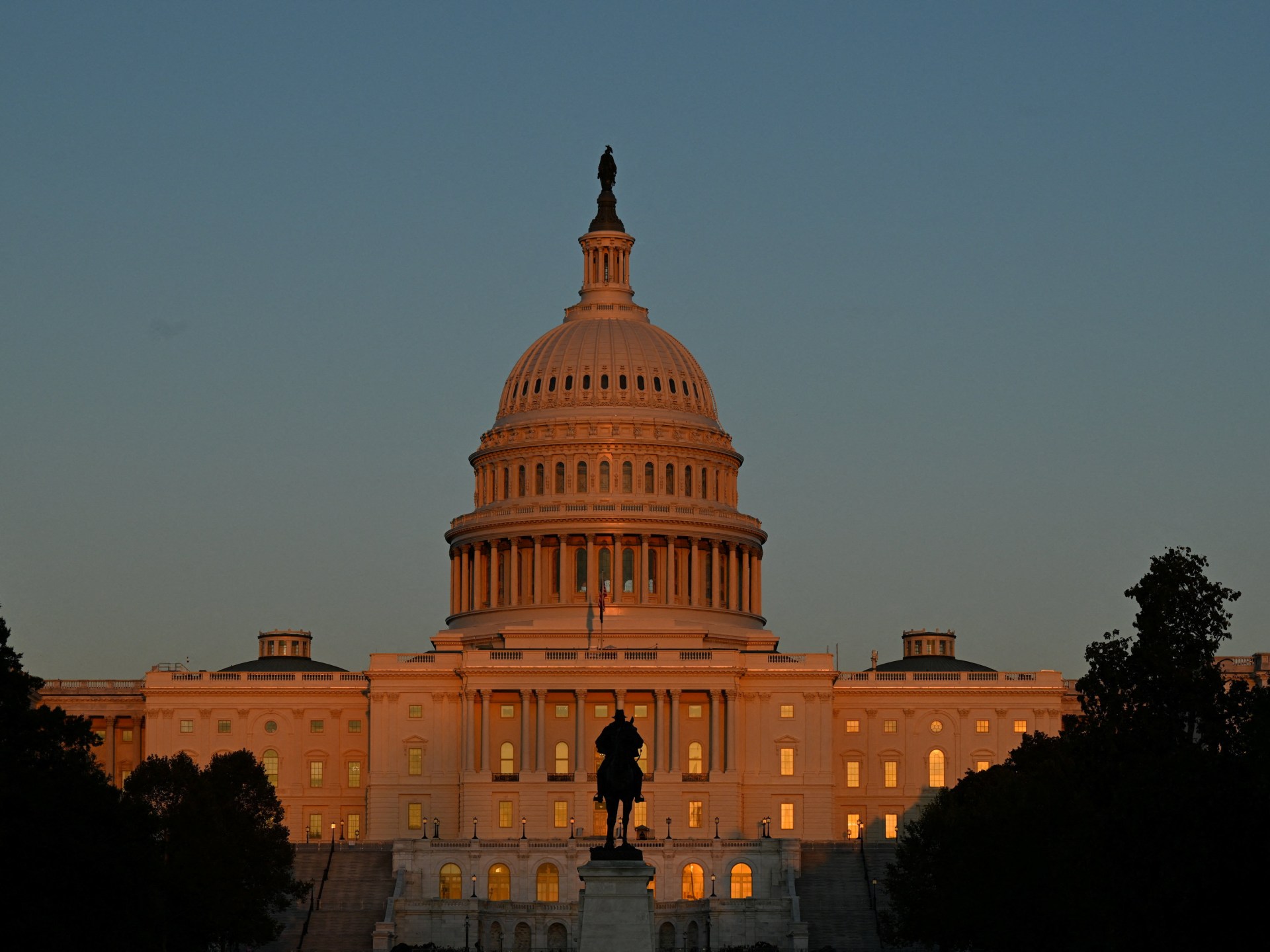
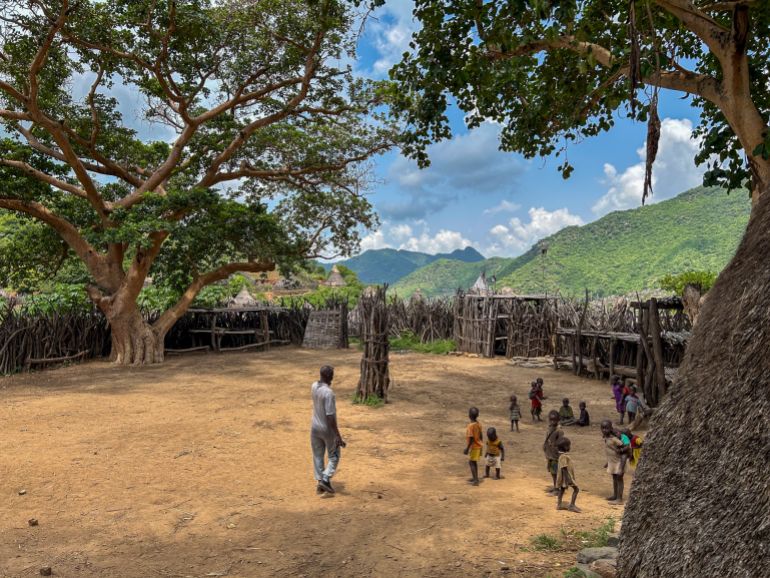
Torit, South Sudan – Solomon Oture was on the run.
As a rainmaker, his job was to summon rain – the lifeblood of his small farming community – through prayer and ritual.
list of 3 itemsend of list
But after consecutive years of drought, Oture’s relationship with his native village of Lohobohobo – a remote cluster of huts on the western side of South Sudan’s Lopit mountains – began to fray. Frustrated community leaders came demanding an explanation for his failures.
As anger rose, Oture, in his early 50s, feared for his safety. He fled, taking refuge at the home of his brother’s widow in another village, a four-hour walk away.
But his escape was short-lived.
Weeks later, in early October 2024, a group of young men from Lohobohobo arrived and made it clear Oture had no choice but to return with them.
The following morning, Oture was brought to face the community in the village square, a dirt clearing encircled by a rough-hewn wooden fence. When elders arrived to question him, the ruling generation of fighting-aged men – known as the Monyomiji – intervened. They announced that a decision had already been made.
According to one witness, Oture did not resist and moved calmly as he was led away from the square, out of the village, and down the mountain to a freshly dug hole in the earth.
When he reached its edge, Oture climbed down into the pit and was buried alive.
In South Sudan, where the climate crisis is ravaging livelihoods, massive floods and scorching droughts have uprooted families and fuelled one of the world’s worst hunger crises.
Amid the mounting desperation, people want answers and, occasionally, someone to blame. In some farming villages, long dependent on seasonal rains, these tensions have put rainmakers at risk.
Oture’s killing was first reported by local media and later confirmed to Al Jazeera by family members, government officials in the state capital, Torit, and residents of the village where he lived.
He is not the only rainmaker to have met a violent death.
At least five others have been buried alive in the Lopit mountains over the past four decades, according to community leaders and local media reports, including one man in a neighbouring village whose 2021 killing was confirmed to Al Jazeera by a family member. More are said to have been buried in nearby areas, as well as burned alive, beaten to death, or chased into exile. The true toll is not known.
When killings occur, community members are reluctant to speak out.
The reporting for this story set out to uncover what happened to Oture and why. In Lohobohobo, nearly a year after Oture’s death, his killing is a taboo subject, and details of what happened are difficult to obtain. Residents of the village where he lived most of his life and was ultimately killed were often afraid to discuss the events surrounding his death. Community members became visibly uncomfortable when Al Jazeera asked about rainmakers, and among those who were willing to speak, fear was palpable.
Those interviewed in Lohobohobo, Torit, and Juba, the nation’s capital, did not identify the alleged perpetrators by name but said they were members of the Monyomiji, who are responsible for enforcing customary laws and protecting the village.
According to Matthew Oromo, a former government official who investigated the incident, as well as several others with knowledge of Oture’s death, the Monyomiji had warned villagers not to speak publicly about the death. Those who defied this order risked being cast as traitors and exiled, he said.
The account of what happened to Oture stems from interviews with people who witnessed the events leading up to his killing, or who interviewed witnesses to the killing itself. Residents of Lohobohobo interviewed for this story have not been named to protect their identities.
Regional experts cautioned against broaching the subject of Oture’s killing with the alleged perpetrators, as it could provoke backlash against individuals suspected of speaking publicly about the incident.

Lohobohobo is a small village of several hundred households located in South Sudan’s Eastern Equatoria state, which borders Uganda to the south and Kenya to the southeast. Nestled within the Lopit mountains, the village is a verdant maze of stone-lined paths winding between thatch-roofed huts and small gardens. Despite the little they have, residents receive visitors with warmth, generously sharing their meals of locally harvested sorghum, meat, and wild greens.
In a region dependent on rain-fed agriculture, rainmakers have long been revered figures.
“Drought is the greatest scourge that can afflict the mountainous region of Southeastern [South] Sudan,” writes American social theorist Mark Anspach in the foreword of the 1992 book Kings of Disaster, a study of South Sudan’s rainmakers by the Dutch anthropologist Simon Simonse. “Since the rainmaker is thought to possess the power to cause or prevent drought, he is the most important king.”
The rainmaker performs rituals at the start of the agricultural season and is compensated with livestock, crops, and labour. They are often addressed by the honorific “Sultan”.
Rainmakers are believed to pass down their powers by lineage, with a single rainmaker from a family serving at any one time. The jurisdiction under a rainmaker’s responsibility is referred to by local leaders as a “raindom” and typically spans several villages. Multiple rainmakers can share a raindom.
Al Jazeera spoke to two rainmakers in the region where Oture lived, who are not being named to protect their identities.
Both have held their positions for at least a decade after inheriting the roles from family members and, in recent years, have withstood extreme dry spells in their communities.
One described the rituals of rainmaking – gathering sacred stones in their hands, spitting on them, and raising them towards the sky to invoke the rains. Sometimes they collect insects from the fields, place them on their altar, and cut them with a ceremonial spear.
Nevertheless, the rainmaker said, “It is not me, but God who brings the rain.”
Although the rainmaker became evasive when asked about tensions with the Monyomiji in their village, during times of drought, they acknowledged that they could face scrutiny. “That’s the only point when I can be scared,” they said.
“The Monyomiji can summon me and ask, ‘Why is there no rain, are you not working?’” they added. “They can be angry.”
Across South Sudan’s southern Equatoria region, rainmaking has long been perilous work.
“The rainmaker is destined to bear the brunt of collective resentment when times are bad,” writes Anspach in Kings of Disaster. “The rainmaker’s job is not just to make rain, but to absorb the community’s pain.”
According to the book, rainmakers have been lynched as far back as the 19th century. But with climate change, erratic rainfall patterns, and a fledgling state that struggles to project authority outside the capital, some fear these spiritual leaders face greater dangers than ever before.
“Of late, the rainmaking role has become very dangerous,” said Ranga Gworo, a South Sudanese researcher who began to study violence against spiritual leaders after a distant relative was accused of casting a spell to prevent rainfall and forced to flee their village. “The subject of rain is the most sensitive in our community because of its connection to livelihoods.”

One of the world’s most vulnerable countries to climate change, South Sudan emerged from a series of civil wars in 2018 largely unequipped to manage the devastating weather patterns afflicting much of East Africa.
Beginning in 2019, one year after a peace accord brought the war’s main belligerents into a unity government, a series of historic floods submerged thousands of kilometres of land and displaced millions from their homes. Meanwhile, erratic rainfall took its toll on farming communities across the southern Equatoria region, historically the country’s breadbasket.
Pietro*, a farmer in his late 20s, had spent most of his life in Lohobohobo until July 2022, when a devastating crop failure forced him to leave home in search of work.
“There was no rain,” he recalled, and his wife and two young children were going hungry.
Pietro and several friends walked 70km (43 miles) to Torit, before borrowing money for transport to Juba, about 140km (97 miles) away. There, he found work as a labourer, earning 40,000 South Sudanese pounds per week, roughly $50 at the time.
“It was not enough,” he said, recalling his wages. He ultimately returned to Lohobohobo last year to try his luck again at farming. “The situation has not changed much,” he lamented.
By 2023, a growing number of people began to leave their homes in rural Eastern Equatoria for neighbouring cities and refugee camps. Those left behind in villages like Lohobohobo foraged for wild fruits and hunted animals to survive, recalled Zakaria Akaba, a local chief.
In November that year, a group of United Nations-affiliated food security experts warned of “emergency levels” of hunger in the county encompassing Lohobohobo because of “prolonged dry spells that led to crop failure”. The UN’s World Food Programme scrambled to deliver emergency food rations to prevent starvation as thousands trekked for days to reach Juba.
“It was devastating,” said Akaba.

People who knew Oture described him as sociable and hardworking, though when he drank, his behaviour could become erratic, even violent, they said.
In 2009, while drunk, Oture threw a spear and impaled his wife, according to his eldest son, Owuor Solomon John, 19, who witnessed the attack as a child. She died in a hospital days later. In the village, her killing was brushed aside as a “domestic issue”, John said.
Oture inherited the role of rainmaker from his uncle in 2017, seven years before his death. His volatility continued during his tenure, community leaders in the region said, and in the lead-up to his killing, accusations against him swirled.
As retribution for personal slights against him, people alleged, Oture performed malicious rituals to keep the rain away. One man accused him of placing a curse by burying a baboon skull. Several others said Oture struck a child so hard that he drew blood.
As the drought worsened, Oture reportedly began to make gratuitous demands in return for his work. He would blame those whom he said had wronged him for the lack of rain and then demand compensation, like livestock, to fix the damage, according to several community members.
“The position of rainmaker has become like a business,” said Ambose Oyet, a community leader from Imehejek, the region that encompasses Lohobohobo. “He wanted people to respect him like God,” said Oromo, Imehejek’s former top official.
While Al Jazeera was unable to independently verify these accusations, the rumours illustrated Oture’s increasing alienation from his village.
By late 2024, Oture’s fraying relationship with the community collided with a third consecutive dry spell. As crops failed and hunger loomed, tensions between the rainmaker and the Monyomiji began to boil over.

In Lohobohobo, like other villages in the Lopit mountains, each new generation of Monyomiji, which takes power every 10 to 15 years, promises to protect the community against all manner of threats.
If the village is attacked, it is the Monyomiji who defend it; when cattle are raided, they pursue the culprits; and during outbreaks of disease, they carry the sick to receive treatment at distant health clinics. But perhaps the gravest threat faced in the drought-prone region is hunger.
The Monyomiji combat hunger by regulating agriculture, according to Luka Asayai, the 38-year-old leader of Lohobohobo’s Monyomiji. They decide which crops to grow, and when, and ensure that able-bodied people are not idle when they can be working in the fields. They also fundraise to buy food after poor harvests, and conduct community farming for elderly people and widows, Asayai said.
Oversight of rainmakers also falls to the Monyomiji, who are responsible for prompting, compensating, and holding these spiritual figures to account.
It was the Lohobohobo Monyomiji who buried Oture alive, alleged Oromo, the former government official, and Leone Oriho, the paramount chief of Imehejek, among others, with knowledge of the incident.
When asked about the relationship between the Monyomiji and rainmakers in general, Asayai acknowledged that sometimes dry spells “can create tension”, but offered no specifics on recent violence. He said during periods of drought, the community, through the rainmaker, “just goes and asks from God”.
In villages hours away from any police post, the Monyomiji enforce customary laws, summoning rule-breakers to account for their crimes, and occasionally doling out physical punishment. “The government is very far,” said Asayai. “They have their way and we have ours.”
Lohobohobo is essentially out of reach for government and law enforcement officials for long stretches of the year. The road from Torit is a rugged, unkempt dirt trail scarred by deep potholes and jagged rocks. Throughout much of the rainy season, it is all but impassable.
Police in Torit say they are often unable to follow up on crimes in remote villages, relying instead on local chiefs to act as extensions of state power. However, according to Oriho, the most senior chief in the Lopit mountain region, the Monyomiji are heavily armed and unaccountable even to their chiefs. “They have gone beyond our power,” he said.
With the state unable to stop them, local Monyomiji act as judge, jury, and executioner for rainmakers, say government officials.
One 43-year-old rainmaker named Lodovico Hobon Angelo was buried alive in the neighbouring village of Mura Lopit in 2021. Like Oture, he was killed during a severe dry spell and was accused of abusing his position for personal gain.
Oyet, a native of Mura Lopit, said local Monyomiji had attempted to bury Hobon a decade before his death, but that he intervened to stop them. Hobon is one of at least half a dozen rainmakers killed in the Lopit mountains in the last four decades, with more killed across Eastern Equatoria state.
Still, police say, no one has ever been arrested for any of these crimes. “It is our culture,” said Oriho. “The Monyomiji prevents the government from intervening in our culture.”
Several community leaders said rainmakers are buried, in part, to avoid individual culpability for the crime. “The community takes the whole responsibility by burying the person alive,” said one community member, who requested anonymity due to fear of reprisal for speaking about Oture’s murder. “And the government will say, ‘How can we arrest the whole community?’”

Oromo, who was chief administrator of Imehejek until June, was in Torit in late 2024 when he heard about Oture’s killing from Oriho. The state governor dispatched Oromo to investigate.
A week later, he arrived in the village, but the Monyomiji refused to speak with him. “They were suspicious of me,” Oromo said. Some residents spoke with him in private, expressing regret about the killing, but he was unable to identify a culprit.
Stonewalled, Oromo returned to Torit. But he visited Lohobohobo again in June as part of a wider tour of the villages under his administration. He spoke to the community about the realities of climate change “as a global issue” and the importance of the rule of law, telling the Monyomiji “not to repeat what had happened [to Oture]”, and offering a vague warning that if they did, “the government will take a serious step”.
Though people in the village may have been angry with Oture, it is unclear how much popular support there was for his killing.
The community was warned not to report Oture’s murder to the police, multiple people told Al Jazeera.
Oromo said when he first visited Lohobohobo, some expressed regret, apologised for what the Monyomiji had done, and said they had been warned to keep quiet. Other acknowledgements of Oture’s death, like open mourning or holding a funeral, were banned, he said.
Oyet said anyone who held a funeral would be seen as “rebelling against the community”.
In Lohobohobo, some residents reshaped the details of Oture’s death, while others sidestepped mention of him entirely.
One person initially said Oture had killed himself, before conceding that he was buried alive when asked about local media reports.
Another resident, when asked about the punishment of rainmakers in Lohobohobo, said a rainmaker had recently been “chased away” from the village, never to return. When asked for the rainmaker’s name, the man, visibly uncomfortable, leaned in and whispered, “Solomon”.

Oture’s son, John, had been living abroad for a decade before he arrived in Juba in August 2024. When he was eight years old, Oture sent him to live in the Kakuma refugee camp, in northern Kenya, away from the war unfolding in South Sudan. The two had spoken on the phone only a handful of times since.
In November, John received a call from his cousin informing him of his father’s death. He hung up the phone angrily. Despite the complicated relationship John had with his father, the news “caused me great pain”, he said.
Nevertheless, he was circumspect when asked about the Monyomiji. “I don’t have any issues with them,” he said. “They had a problem with my father, not with me.”
He pondered the possibility of visiting Lohobohobo one day and smiled as he searched for his grandmother’s hut in the pictures of the village.
John said he hoped that mob justice would not be inflicted on a rainmaker again and that “this story will encourage generations to come not to do the same thing”.
Meanwhile, this year’s agricultural season has been only marginally better. Late rains caused widespread crop failures during the first planting season, which typically begins in March. By July, when the rains began in earnest, farmers had spent months planting and replanting crops that would not grow.
Pietro, the farmer, may again leave his family to search for work. “Because the situation is still bad, I may go back [to Juba],” he said. “We plant, and it fails.”
Climate conditions are likely to get worse. By 2060, the hottest month in the region is projected to increase by more than 7 degrees Celsius (12.6 degrees Fahrenheit).
“People are discouraged, and they are going away from here,” said Oromo. “There is no hope for the rain.”
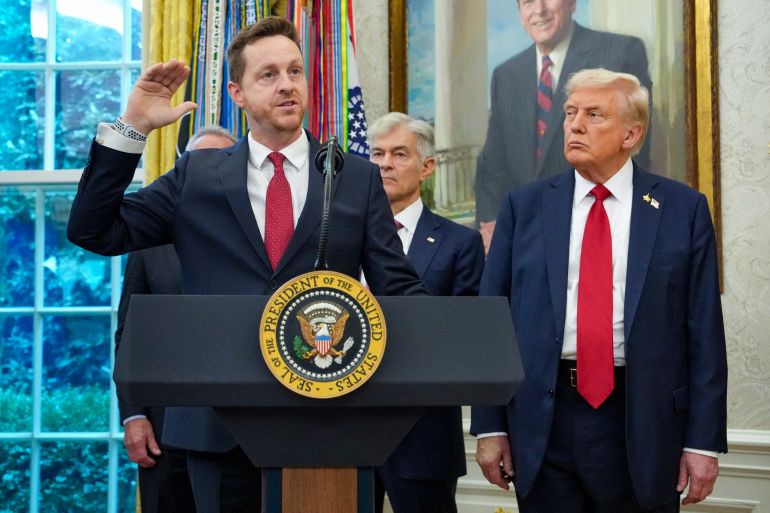
TrumpRx, the new website that will let American citizens purchase prescription drugs from reputable pharmaceutical companies at reduced prices, was made public earlier this week by US President Donald Trump.
Pfizer, the first United States pharmaceutical group to sign up to the website, said it would offer discounts of up to 85 percent on the cost of its medicines for those not using health insurance policies to pay and for those on the government’s low-cost insurance programme, Medicaid. Additionally, Pfizer will lower the cost of its medications for the Medicaid program.
list of 3 itemsend of list
The announcement prompted shares in the pharmaceuticals sector to lift sharply this week, signalling a favourable response from markets and the pharmaceuticals industry.
What are the key details about the new service, how it will operate, and why it is being launched.
In the first quarter of 2026, the new website will be launched. It is a platform from which consumers will be able to buy prescription medicines directly from pharmaceutical companies without going through insurance.
Customers will be directed to the drug’s manufacturer after searching for the prescription drug on the website.
They will have access to discounted prices much closer to those typically paid by national health services in foreign countries at what are known as “most favoured nation” prices.
The website will also be accessible to beneficiaries of Medicaid, the federal government’s insurance program for people with lower-income families.
“By taking this bold step, we’re ending the era of global price gouging at the expense of American families”, Trump told a news conference on Tuesday.
National health services in other countries, such as Canada, France, Germany, Italy, Japan, the United Kingdom, Switzerland, and Denmark, pay US pharmaceutical companies for prescription drugs.
As these countries buy medicines in bulk, they have much greater purchasing power to demand lower prices than ordinary consumers. This results in pharmaceutical companies selling their products internationally at much lower prices than they do domestically.
The US cannot leverage this sort of purchasing power because it does not have a national health service, so the government cannot influence the price of drugs in the same way.
According to the Trump administration, this means that American pharmaceutical companies are artificially inflating prices while subscribing foreign health services. In May this year, therefore, he signed an executive order aimed at reducing prescription drug prices in the US, stating: “The United States will no longer subsidise the health care of foreign countries”.
Prices continue to fluctuate between countries when a country grants MFN status and commits to providing the recipient country with the same trade advantages it gives any other country with MFN status, but not always at the same low prices. However, it is understood that companies will be expected to offer drugs at their lowest selling price in any other country.
The launch of the new website is just one part of Trump’s strategy to reduce prescription medicine prices in the US.
He instructed the CEOs of 17 pharmaceutical companies to lower their prices in a letter sent in July of this year.
In the letter, he laid out demands and promises:
The first of these promises is fulfilled by the new TrumpRx website.
To address the second promise, Trump has also announced new 100 percent tariffs on imported, branded pharmaceutical products. Companies that establish production facilities and operations in the US will not be subject to these conditions.
He cited the cost of prescription drugs as one of the reasons for levying these tariffs.
According to a 2022 study commissioned by the Office of the Assistant Secretary for Planning and Evaluation, published on the US government website, standard insulin prices in the US are as much as 10 times higher than prices in 33 OECD countries.
The study found that average gross US prices were nearly nine times as high as those in France and the United Kingdom, nearly nine times as high as those in Italy, more than eight times as high as those in Japan, about seven times as high as German, and more than six times as high as those in Canada.
Many people who take insulin already pay a “net price”, which is lower than the standard price via rebates that the manufacturer agrees with insurance companies. However, according to the report, the net price is still typically 2.33 times what it was paid for other nations.
Anyone who wants to use the platform to purchase prescription medications directly from pharmaceutical companies at a discount instead of purchasing them through insurance coverage.
A 2024 report from the US Census Bureau showed that about 8 percent of the US population (26 million people) did not have health insurance in 2023 – so these people may be able to benefit.
Lower prices are likely to benefit the Medicaid program because of its agreement with Pfizer’s more favorable terms. However, details of how this part of the deal will work have not been fully explained.
According to experts, the majority of Americans will not use the website because most of them currently use insurance to provide medical care.
Stacie B Dusetzina, professor of health policy at the Vanderbilt University Medical Center in Nashville, told Al Jazeera: “There are a small number of people who may be better off purchasing their medicine this way, but the majority of Americans won’t benefit from this type of model”.
However, she continued, “We can’t say for certain that the deal will save the public Medicaid program money without knowing more about how that deal is structured.”
Trump claimed on Tuesday that Pfizer Pharma Group would be the first company to sign and promote the new website.
In return for direct access to consumers, the US pharmaceuticals major has agreed to lower the cost of its prescription drugs for those buying direct via the site (and not using insurance to pay), as well as those on the Medicaid programme. According to Trump, customers will pay prices that are closer to those in the “most favoured nation”.
In a news release, Pfizer said it had “voluntarily agreed to implement measures designed to ensure Americans receive comparable drug prices to those available in other developed countries” and said it will also price “newly launched medicines at parity with other key developed markets”.
The majority of the Company’s primary care treatments and some limited specialty brands will be discounted, the company said in a statement. The company said that this will be true for prices as high as 85 percent and, on average, 50 percent.
The White House and Pfizer gave some examples of primary-care Pfizer medicines which will be available on the TrumpRx website. This list is not exhaustive:
Some of these drugs will remain very expensive even with the discounts. For instance, Xeljanz, according to Pfizer’s website, costs roughly $6, 000 per month at the most basic price. A 40 percent discount brings this down to $3, 600 per month.
Americans who have health insurance currently can purchase the medication for up to $20 per month, which is frequently the lowest price paid by the terms of their insurance policy.
According to the company, Pfizer has agreed to lower drug prices generally in the US, keeping them level with those in other developed nations.
The group has also committed to spending $70bn on domestic manufacturing facilities, which will be dedicated to “US research, development and capital projects in the next few years”.
Trump’s tariffs on branded pharmaceuticals made abroad will be followed by the company for a three-year grace period.
“I think today we are turning the tide, and we are reversing an unfair situation”, Pfizer’s CEO Albert Bourla said at a news conference on Tuesday alongside Trump, referring to the difference in prices that people in the US pay for medicines compared with consumers overseas.
Trump said on Tuesday that other pharmaceutical companies are expected to sign up for the new website, but there have been no new official announcements so far.
According to Dusetzina, “It is obvious that the deal that Pfizer struck is a kind one for the industry.” “The companies that received letters requesting that they act are all likely to make agreements that I would expect to be similarly structured.
These businesses will want commitments so they can avoid any potential tariffs, if nothing else. That is worth a lot to them and to their shareholders. I believe it will still be difficult to tell whether the changes made have any measurable advantages for the typical American.
Overseas pharmaceutical companies may be able to sign up as well.
Swiss businesses, including Roche and Novartis, expressed interest in collaborating with the Trump administration to increase the cost of their medications for Americans.
Stephan Mumenthaler, director general of scienceindustries – which represents about 250 Swiss chemical and pharmaceutical companies – told the Reuters news agency on Wednesday that he expected” mini deals “to come from Swiss and global pharmaceutical companies in the coming days.
They are considering using similar schemes, he said, “How can you omit the margins that middlemen are taking away so that you basically have the same price as before, but the end user still receives a lower price?”
Meanwhile, on Monday, the Pharmaceutical Research and Manufacturers of America (PhRMA) announced the launch of its own website AmericasMedicines.com, which will enable consumers to directly buy drugs from manufacturers as well.
We need policymakers to protect innovation, fix the dysfunctional insurance system that burdens patients with high out-of-pocket expenses, and ensure foreign governments pay their fair share, according to Stephen J. Ubl, president and CEO of PhRMA, in a press release.
On Tuesday, Pfizer’s share price increased 7% in the US and 8% more than that on the UK stock exchange.